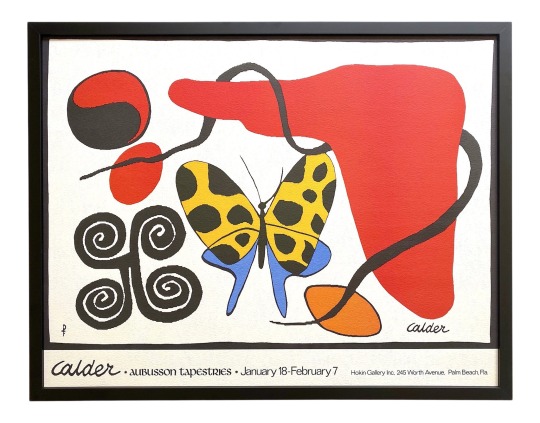#aubusson tapestry
Photo

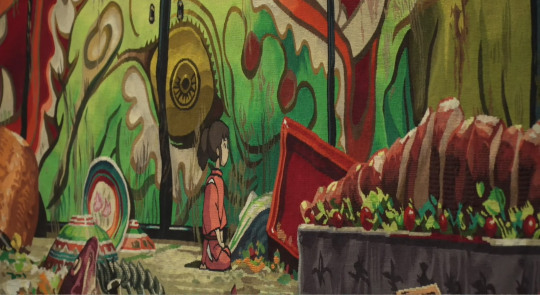

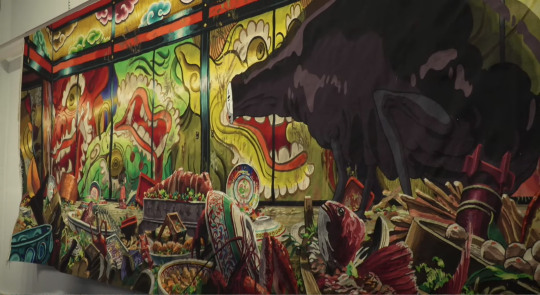

“The imaginary world of Hayao Miyazaki in Aubusson tapestries” project has unveiled a new tapestry today. It’s the banquet scene from Spirited away where Chihiro confronts No-face, and it’s GLORIOUS.
Pictures are from Catsuka and Cité internationale de la tapisserie’s insta. You can also see it here in video (all in French sorry!), 40min has the “tombée de métier” (when weavers cut the warp threads once a tapestry is finished) and 1h08min is when they unveil it.
Aubusson manufacture project is to make 5 full size tapestries from Ghibli’s works using traditional weaving techniques.
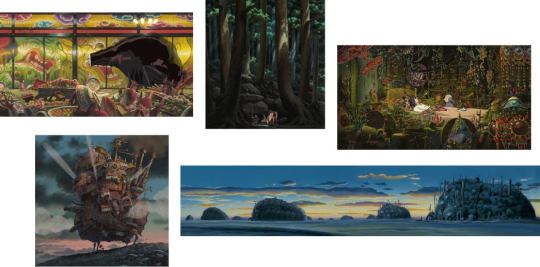
They have already worked on Princess Mononoke, finished last year:
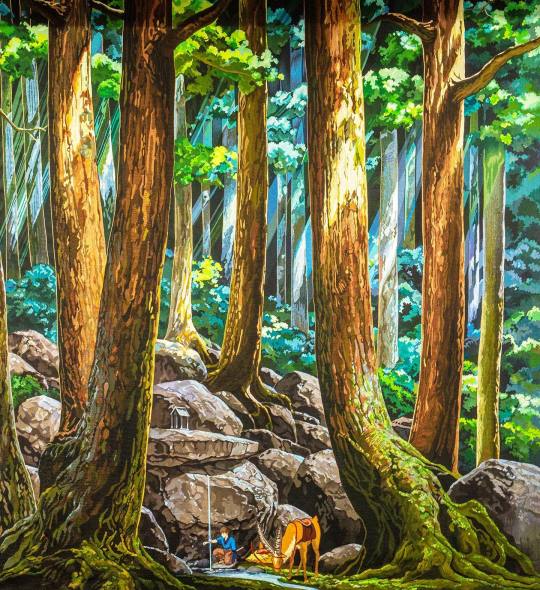
But the scenes I anticipate the most are coming, as they are now starting to work on Howl’s Moving Castle - especially Howl’s wizard bedroom :D
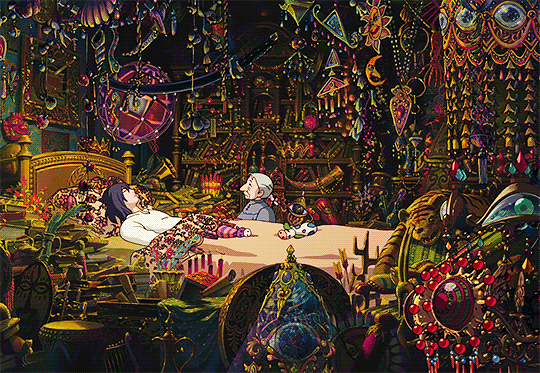
They are atm working on the cartons (weaving guide/blueprints):


Spirited Away tapestry will stay exposed in Aubusson for the moment, while Mononoke one will be shown at Opéra de Bordeaux in March, and in Musée du Quai Branly in Paris this summer ;)
#japan#art#fiber arts#Arts and Crafts#aubusson tapestry#studio ghibli#hayao miyazaki#spirited away#sen to chihiro no kamikakushi#chihiro#no face#kaonashi#Howl’s Moving Castle#Mononoke hime#princess mononoke#weaving#weaver
581 notes
·
View notes
Text
Los Angeles Library
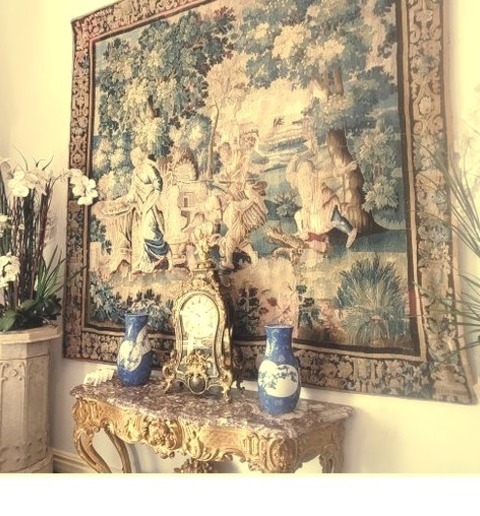
Huge elegant open concept marble floor and black floor living room library photo with white walls and a wall-mounted tv
0 notes
Photo

The Hôtel Camondo, home to one of the finest collections of 18th century French decorative art in the world. The gilded rooms are adorned with canvases by the likes of François-Hubert Drouais and Élisabeth Vigée Lebrun. The museum teems with further Ancien Régime treasures, from Riesner and Oeben cabinets, Beauvais and Aubusson tapestries, Savonnerie carpets from the Grande Galerie in the Louvre, to fine pieces of resplendent Sévres porcelain. No amount of beauty, however, can make one forget the story of the great family that once lived inside this glittering palace. Photograph by Musée des Arts Décoratifs #museenissimdecamondo #hotelcamondo #ruemonceau #paris #france #hotelparticulier #museum #frenchdecorativearts #frenchdecorativeantiques #ancienregime #francoisherbertdrouais #elizabethvigeelebrun #riesener #oeben #beauvais #aubusson #savonnerie #tapestry #sevres #sevresporcelain #georgesjacob #houdon #18thcentury #18thcenturyinterior #antiquefurniture #interiors #interior #decor #art #interiordecor (at Musée Nissim-de-Camondo) https://www.instagram.com/p/CqGXwxxInm3/?igshid=NGJjMDIxMWI=
#museenissimdecamondo#hotelcamondo#ruemonceau#paris#france#hotelparticulier#museum#frenchdecorativearts#frenchdecorativeantiques#ancienregime#francoisherbertdrouais#elizabethvigeelebrun#riesener#oeben#beauvais#aubusson#savonnerie#tapestry#sevres#sevresporcelain#georgesjacob#houdon#18thcentury#18thcenturyinterior#antiquefurniture#interiors#interior#decor#art#interiordecor
21 notes
·
View notes
Link
Tapestries - A good 17th century French Aubusson verdure tapestry in wool and silk depicting a a wader in a landscape with ruins at the back. Provenance : Château Tillède in Arveyres (Gironde), property having belonged to Armand Lotti (1897-1993), pioneer aviator, sponsor of the first French crossing of the North Atlantic in the West-East direction in 1929. B
0 notes
Text

Appropriation of Urn with Flowers (Aubusson Tapestry)
Pearlescent Photographic Print. Acrylic and Fabric Paints. Wood. Steel. Found Fabric. Glue. Thread. 2020.
I've been posting older art work here today, and I wanted to take the time to talk about one of the coolest things I've ever made. This work began with an image of an Aubusson Tapestry which I wanted to reinterpret the shape of the vase to be the shape of a body. I painted myself, bought two bouquets of meaningful florals, and photographed myself. This image was composited with textures and printed on gold perlescent photo paper. I sourced some second hand doilies and a childrens tapestry. I used some second hand RIT dye to dye the tapestry with blue undertones. I cut it in half and sewed it back together to create framing with the bows. I used found fabric paint to add the roses and bird details. I made this frame from wood I cut and stained along with steel hardware. She has sadly been lost to time and damage, but lives on as my multimedia masterpiece.

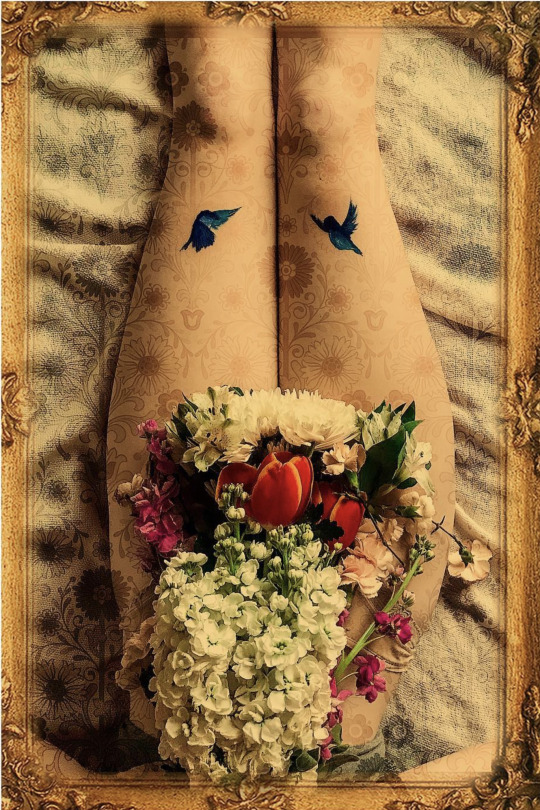

#art#my work#artist#multimedia#phtography#found materials#sustainable art#painting#framing#flowers#botanical#aubusson#tapestry#textile art
1 note
·
View note
Photo
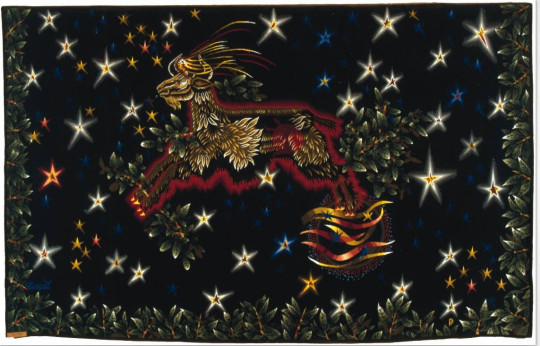
Jean Lurçat (France 1892-1966)
La Mare aux Étoiles (1955)
Aubusson tapestry 164 x 98 cm
1K notes
·
View notes
Text
Treasure in the Royal Tower Tapestries
(some sourced more reliably than others)


17th c Aubusson Mythological Tapestry (possibly Venus and Adonis)

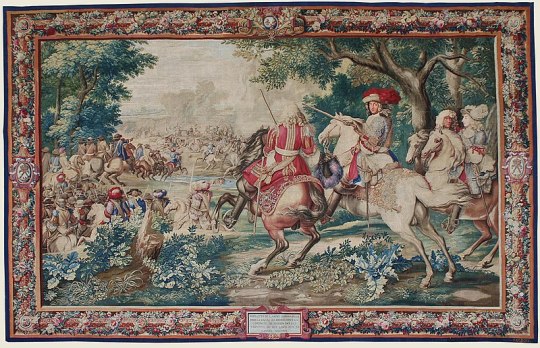
l'Histoire du Roi: the defeat of the Count of Marsin, ca. 1711-1715


Young cavalier executing the levade before Mercury and a gentleman, ca. 1666


The Great Yarmouth Cloth of Estate with Tudor Arms, ca. 1547-1594
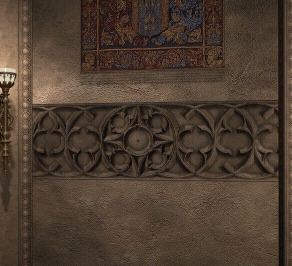

Tapestry with the De Nagera family coat of arms, ca. 1550


left: 17th c. Louis XIV Armorial Tapestry with Marquis de Louvois' coat of arms (but make it dark, I guess)
right: Les Grandes Armes de l'Empire Français, ca. 1808-1811 (but make it dark, I guess)
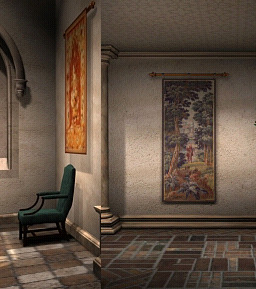

left: tapestry recreation websites my unreliable and beloathed, but they seem to be my only option. pattern is described as a 'Napolen III style, 19th c. entre fenêtre' but I have not been able to find the original design
right: tapestry recreation websites my unreliable my beloathed my only option once again: I don't even have my original source link for this one because in addition to being unreliable, sites that sell handmade tapestry recreations also tend to be short lived. but hey, you can buy one on AliExpress for $3k. seriously though, I have no reliable information for this design.
92 notes
·
View notes
Text
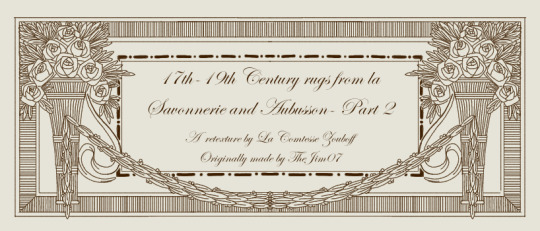
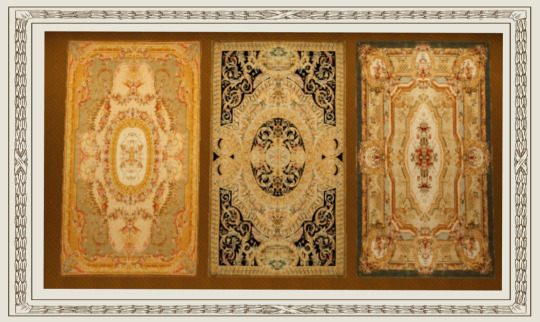
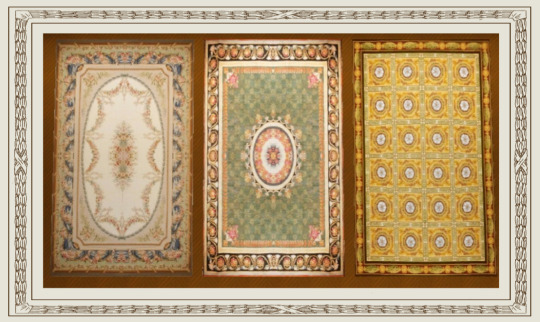

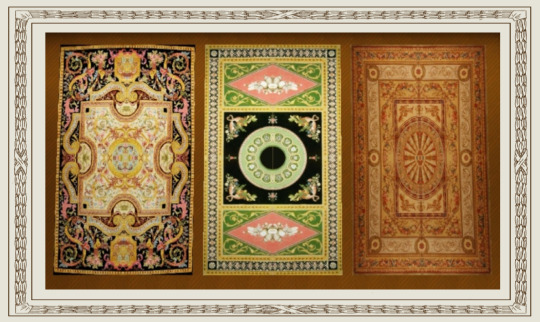
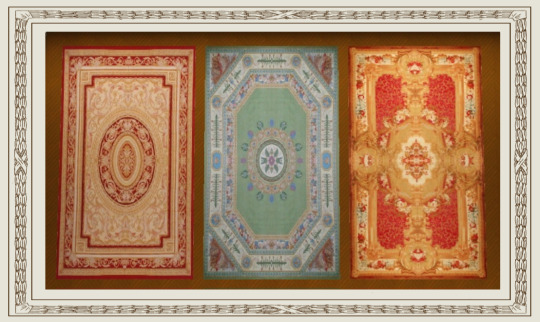

XVIIth-XIXth Century rugs from the Manufactures of la Savonnerie and Aubusson (and Axminster!)
Part II
A retexture by La Comtesse Zouboff — Original Mesh by @thejim07
These rugs were created by either La Savonnerie or Aubusson manufactures, two prominent and luxurious rugs, upholstery and tapestry manufactures stablished in france during the Ancien Régime.
The set contains 18 swatches in many styles, ranging from Louis XIV to Edwardian, in 2 sizes (5x7 and 4x6) and of course none of then are castable.
This time, I added a small gift to make up for the delay, it's a rug woven by Axminster for the Saloon at Saltram House in Plymouth, England! (1st picture, first rug from left to right)
Found under Decor > Rugs for 3.200§ (4x6) and 4.360§ (5x7)
Retextured from "rectangular classic rugs - 5 sizes - 18 variations" found here
CC shown here:
Floor by @martassimsbookcc

Drive
(Sims3Pack | Package)
(Useful tags below)
@joojconverts @ts3history @ts3historicalccfinds @deniisu-sims @katsujiiccfinds @gifappels-stuff
-------------------------------------------------------
#ts3#the sims 3#s3cc#sims 3#sims 3 cc#sims 3 download#sims 3 decor#aubusson#rugs#carpets and rugs#comtesse zouboff
125 notes
·
View notes
Text


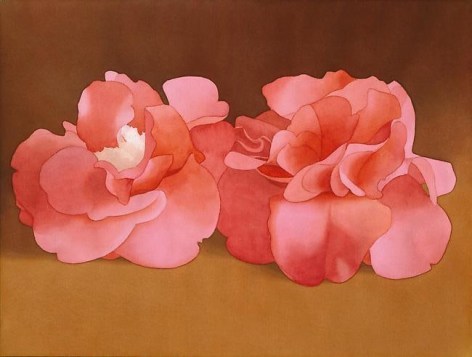





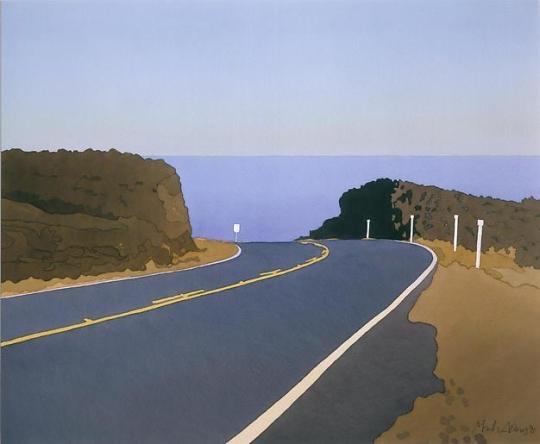
Mark Adams was born in Fort Plain, New York in 1925 and died in San Francisco in 2006. He attended the Hans Hofmann School of Fine Arts in New York City in 1945 after studying for two years at Syracuse University. He spent the next few years traveling between New York and California before he settled in the San Francisco Bay Area in 1952. Adams married fellow artist Beth Van Hoesen in 1953, and completed a four-month apprenticeship in Aubusson tapestry with the acclaimed Jean Lurcart in Saint-Cere, France in 1955.
Mark Adams is best remembered for his versatility as an artist, possessing talent in a diverse array of artistic media including tapestry, stained glass, oil painting, mosaic, drawing, watercolor, and printmaking. Early in his artistic career he focused on tapestry and stained glass. By 1962 Adams had two solo exhibitions of his tapestries at the de Young Museum and the San Francisco Museum of Modern Art. He completed tapestry commissions for various institutions, including the San Francisco International Airport. Adams also took an interest in stained glass, which he considered an extension of his work with tapestry and his enthusiasm for liturgical art.

By 1975, Adams grew frustrated with the limitations of his craft and the lack of complete control he had over the actual fabrication of his work. Drawn to the idea of small, intimate, and personal works that he could manage from beginning to end, he began a new venture in watercolour. Adams soon realized he could incorporate his techniques of flat planes of color as he had in tapestry and stained glass by using a wash to create his desired spatial effects, along with continuing his ideas of transparency and luminosity. He favored the quotidian subjects that exemplified his life, depicting them in such a way as to evoke a sense of nostalgia. Adams eventually learned to deemphasize his precise technique as a means to communicate his excitement for the subject he was portraying.
42 notes
·
View notes
Text

Simon CHAYE (1930) for AUBUSSON
The pheasant, 1966
Wool tapestry, signed and dated on the bolduc. Atelier Harrot, numbered 24.499.
Interencheres
61 notes
·
View notes
Photo

In the dining room, a 100-year-old kilim rug brings together reproduction Russian armchairs, a rustic New Mexican bench, and Chippendale-style chairs with Aubusson tapestry seat cushions.
Mary Emmerling’s American Country Cottages, 1993
#vintage#vintage interior#1990s#interior design#home decor#dining room#antique#armchair#bench#French doors#terrace#wicker#Chippendale#kilim rug#tapestry#floral#cottage#country#style#home
132 notes
·
View notes
Photo

Designer Jean Rothschild (1902–98) produced these three low, gilt-wood chairs around 1934 for the Grand Salon of the SS Normandie. The Aubusson-tapestry upholstery, which is original, is the work of Émile Gaudissart.
#jean rothschild#chair#lounge chair#gilded#french design#emile gaudissart#tapestry#textiles#art deco#20th Century
143 notes
·
View notes
Photo

Jean Lurçat
Nappe blanche (White tablecloth)
Aubusson tapestry woven in the Goubely workshop.
Circa 1955.
“Lurçat’s artistic production was immense : it is however his role as the renovator of the art of tapestry design which ensures his lasting renown. As early as 1917, he started producing works on canvas, then in the 20’s and 30’s, he worked with Marie Cuttoli. His first collaboration with the Gobelins workshop dates back to 1937, at the same time he discovered the tapestry of the Apocalypse which was essential in his decision to devote himself to tapestry design. He first tackled the technical aspects with François Tabard, then on his installation at Aubusson during the war, he established his technique : broad point, a simplified palette, outlined cartoons with colours indicated by pre-ordained numbers.
A huge production then follows (over 1000 cartoons) amplified by his desire to include his painter friends, the creation of the A.P.C.T. (Association des Peintres-Cartonniers de Tapiisserie) and the collaboration with the art gallery La Demeure and Denise Majorel, and then by his role as a tireless advocate for the medium around the world.
His tapestries reveal a pictorial world which is specifically decorative, with a very personal symbolic iconography : cosmogony (the sun, the planets, the zodiac, the four elements…) stylised vegetation, fauna (rams, cocks, butterflies, chimera …) standing out against a background without perspective (voluntarily different from painting) and, in his more ambitious work, designed as an invitation to share in a poetic (he sometimes weaves quotations into his tapestries) and philosophical (the grand themes are broached from the wartime period onwards) vision whose climax is the “Chant du Monde” (Song of the World) (Jean Lurçat Museum , ancien hôpital Saint Jean, Angers) which remained unfinished at his death.
The theme of the laid table is a leitmotiv in Lurçat’s work as early as the 1940’s (cf The four corners, 1943 Goubely-Gatien workshop, Angers Musée Jean Lurçat et de la tapisserie contemporaine). These tables, often with connotations of the horn of plenty and often featuring musical instruments (most often the mandolin) recall the traditional still life’s of the XVIIth century, not, as it happens, a theme of contemporary tapestry.”( https://www.latapisserie20e.com/en/produit/jean-lurcat-19/)
Artist
Lurçat Jean
43 notes
·
View notes
Text
Chateau de La Ferte Saint-Aubin. Part 2.
The Sitting Room. The paneling, floor and chimney date back to Louis XVI (late 18th century). The room includes an 18th century Persian carpet, a pair of gilded wooden consoles and furniture covered in Aubusson tapestries dating back to Louis XVI. The large mirror on the left has a medallion portrait of Marshal de la Ferte Senectere painted in 1670, with a portrait of Duchess de la Ferte Senectere, his second wife, painted by Mignard in the 17th century, facing it on the mirror above the chimney.The Billiard Room. This room was entirely redecorated by the O'Gormans around 1911. It had originally been a bedroom with 18th century paneling. The room has a beautiful set of neo-gothic furniture brought back from Britain by the O'Gormans, each piece featuring their arms and motto. The billiard table comes from the Chevillottess in Orleans.



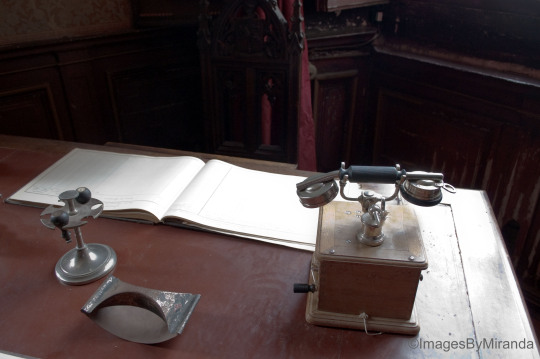
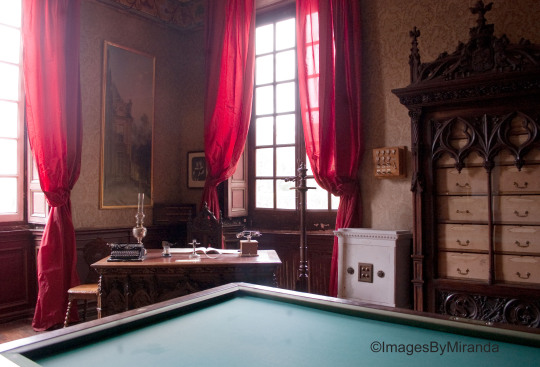
4 notes
·
View notes
Text


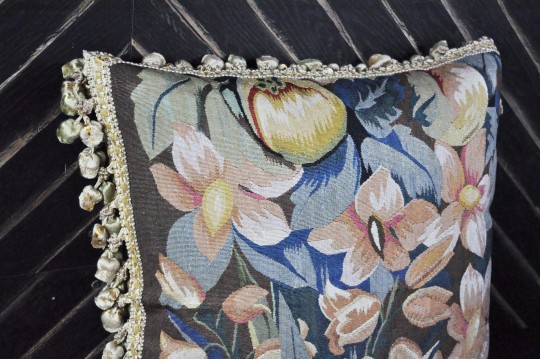
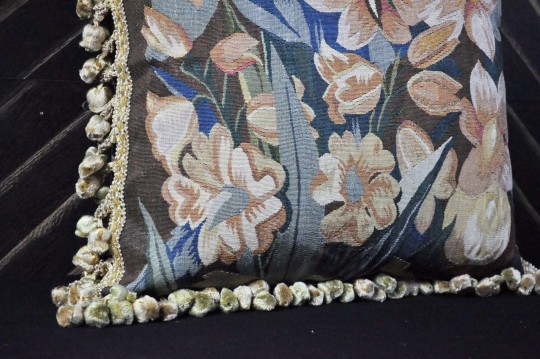

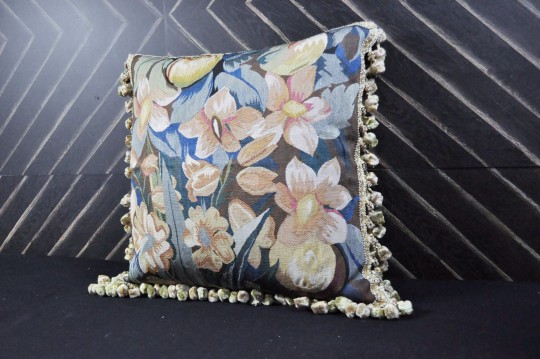
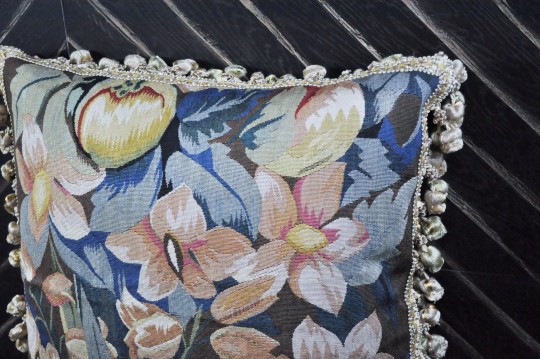

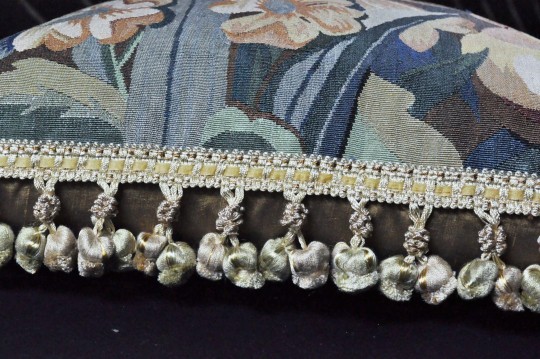

0 notes
